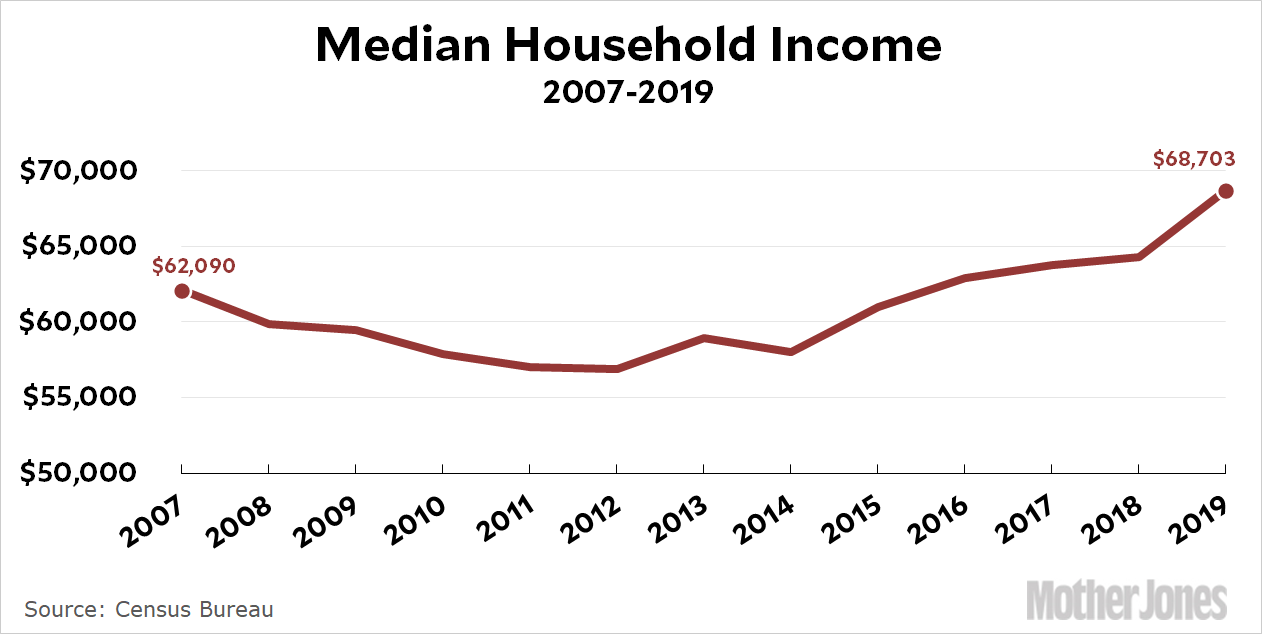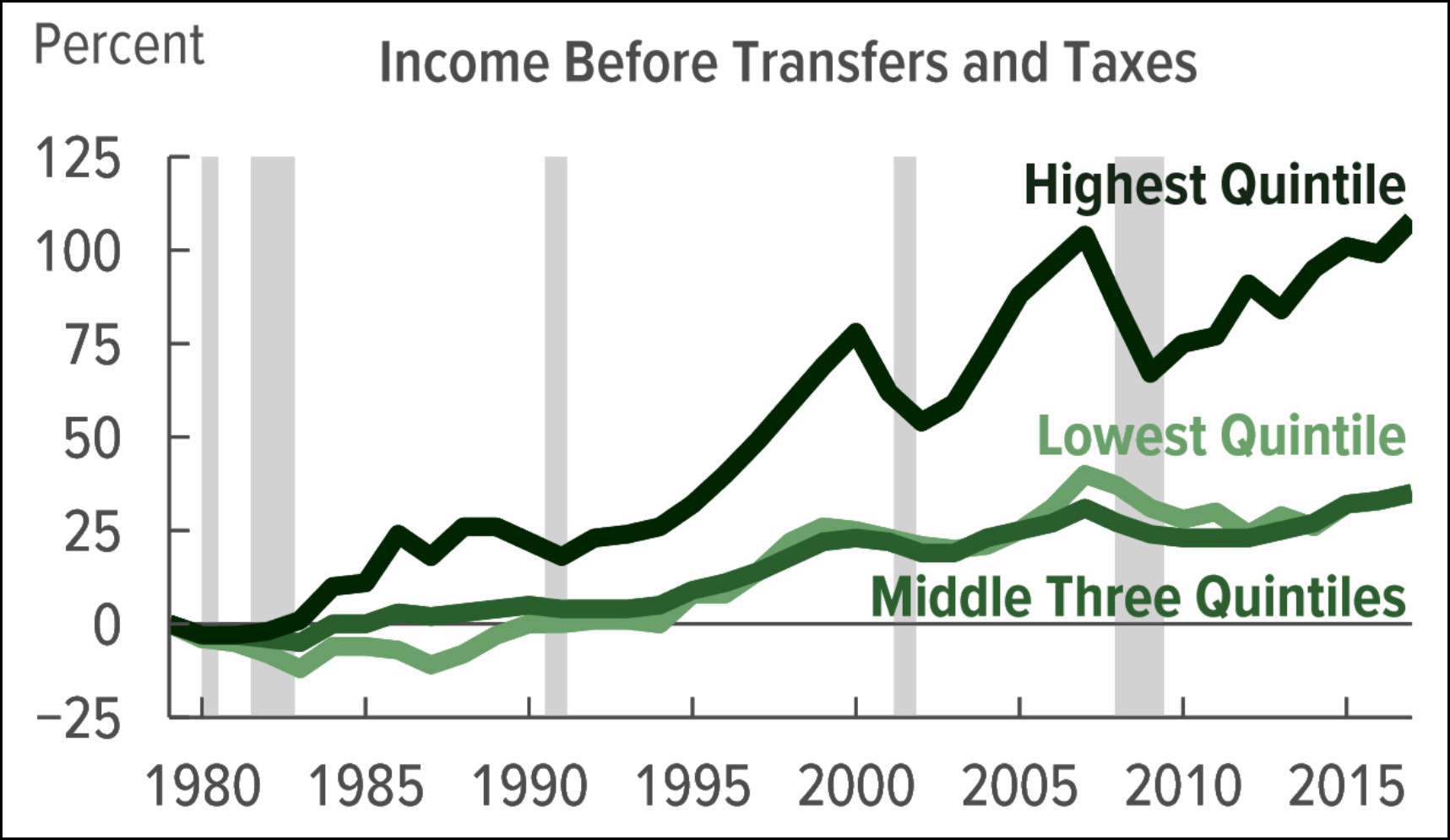I have a few little things that have been bugging me, but none of them is really worth a whole post on its own. So I’m just going to mention them all briefly in a little potpourri post. Here they are.
I keep running into claims that the middle class is dead, killed off by income losses since the Great Recession. But it ain’t so. Here is median income since the peak year before the recession:

That’s an increase of 10 percent. Here is the CBO’s estimate of middle-class income vs. top income through 2017:

Since 2007, income of the middle 60 percent has gone up 4.3 percent, while income of the top 20 percent has gone up only 2.7 percent.
God knows that income inequality has increased generally since the Reagan era. I’ve written about this often and at length (here, for example). Still, that doesn’t mean that the middle class has died or that the affluent have outpaced the middle class during every single time span. In the case of the Great Recession, the well-off suffered more than the middle class and then made up more than the middle class. But when you net it out, the middle class did a little bit better than the rich.
(This doesn’t tell us anything about the top 1 percent or the top 0.1 percent. But it does tell us a lot about the middle class.)
Whenever progressives talk about Obamacare, the conversation usually turns immediately to a public option. In other words, progressives want people to be able to buy into Medicare at a set price.
But why? If you ask ordinary people what their biggest complaint is with Obamacare, it isn’t about the lack of a Medicare option. It’s about the fact that it costs too damn much. If you’re poor, you qualify for Medicaid. If you’re a little better off, the federal subsidy makes Obamacare free or close to it. But once you start moving into the middle class, the subsidies decrease pretty rapidly, and by the time you hit the middle-middle class they’re mostly gone. And since Obamacare raised the price of private insurance, this means that many middle-class families end up paying a lot of money for insurance with big deductibles.
So let’s forget about the public option for now. The real problem with Obamacare is the usual one with Democratic initiatives: it just isn’t funded well enough. In round numbers, we spend about $100 billion per year on Obamacare subsidies, and that should be doubled. If we did that, generous subsidies could be offered all the way into the high end of the middle class, and it could subsidize decent gold and platinum policies with modest deductibles and modest copays. “Double the subsidies!” should be the rallying cry of anyone who wants to improve Obamacare.
A few days ago, the new, more conservative Supreme Court ruled that New York’s COVID-19 regulations were an unconstitutional intrusion on the free exercise of religion. The most common reaction on the left was “Here we go. This is just the start.”
And it might be. But in this case, the conservative justices said only that religious gatherings should be considered “essential” and therefore regulated in the same way as other essential activities. In the face of a pandemic I doubt that I would second guess local officials like this, but the ruling isn’t really all that bad. I suspect that lots of liberals simply can’t grasp the notion of a religious assembly being considered “essential,” while plenty of conservatives can. Whichever side you come down on, just how sure are you that the other side is being ridiculous?













